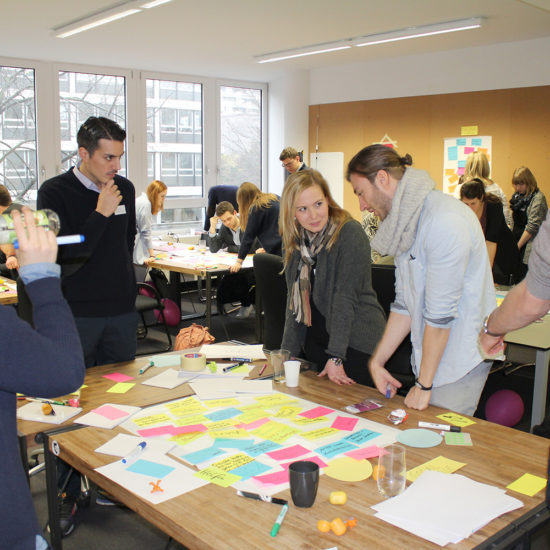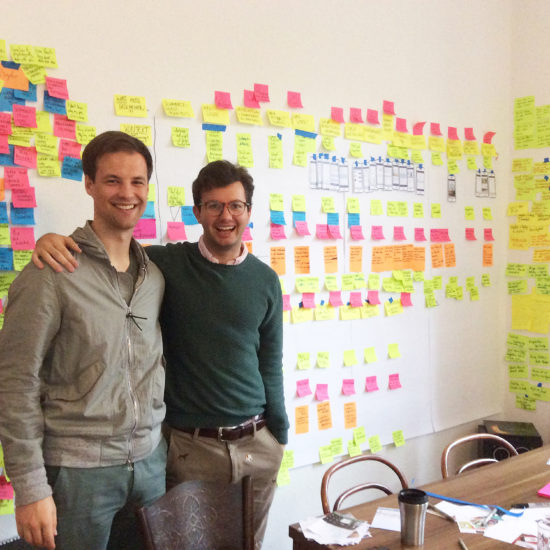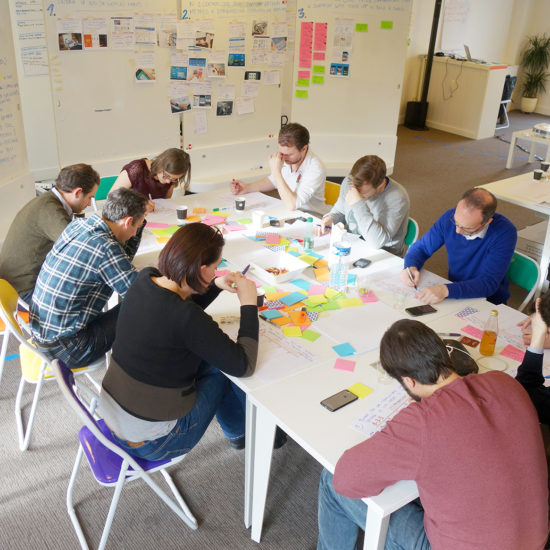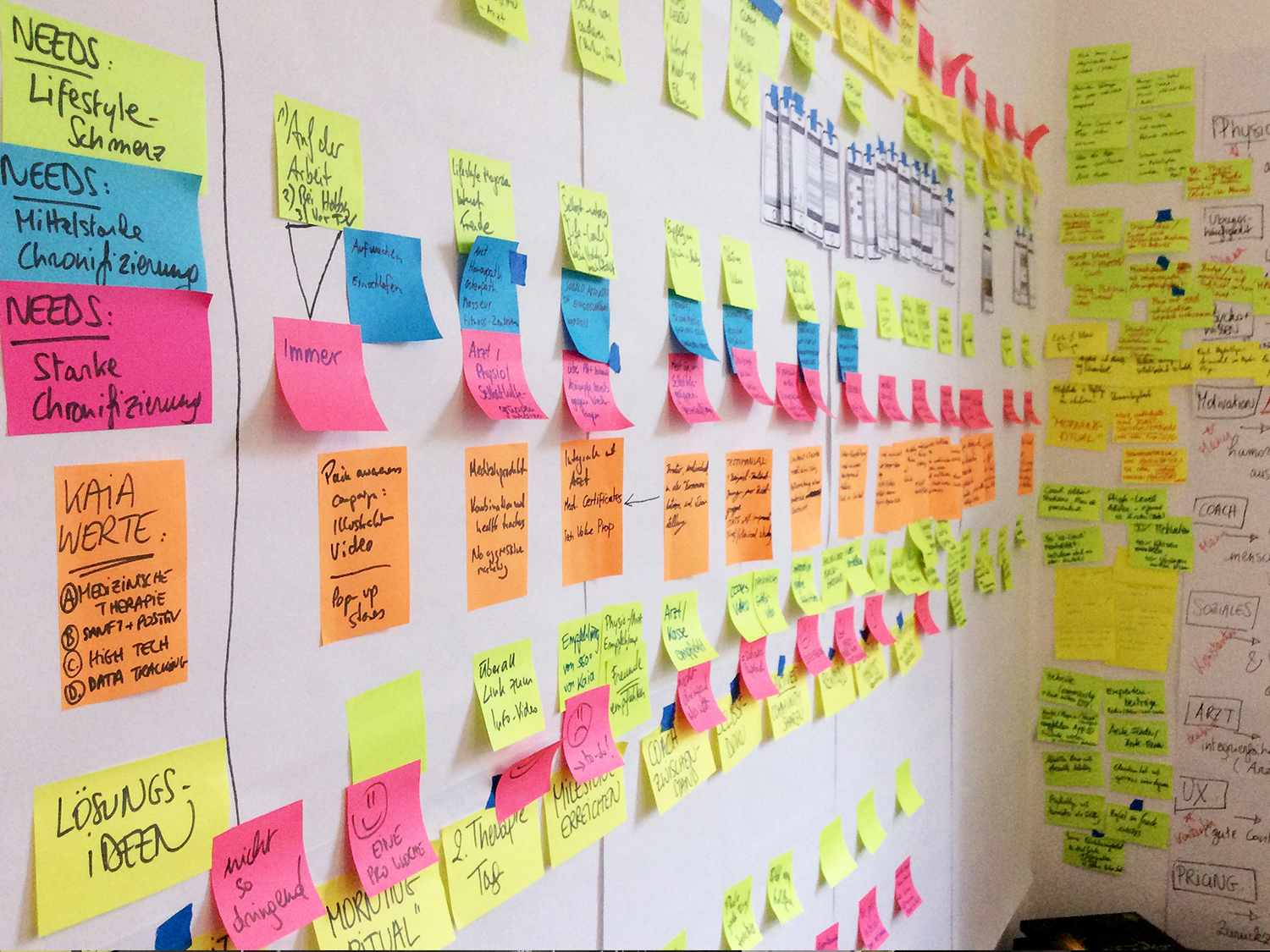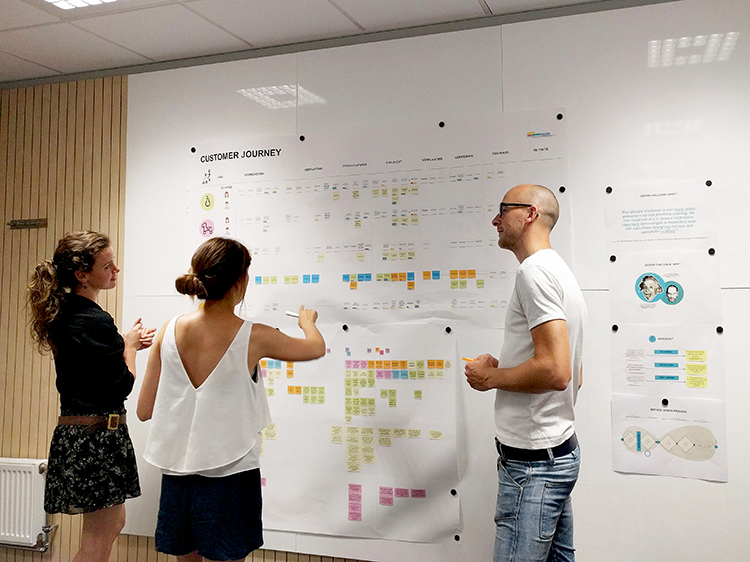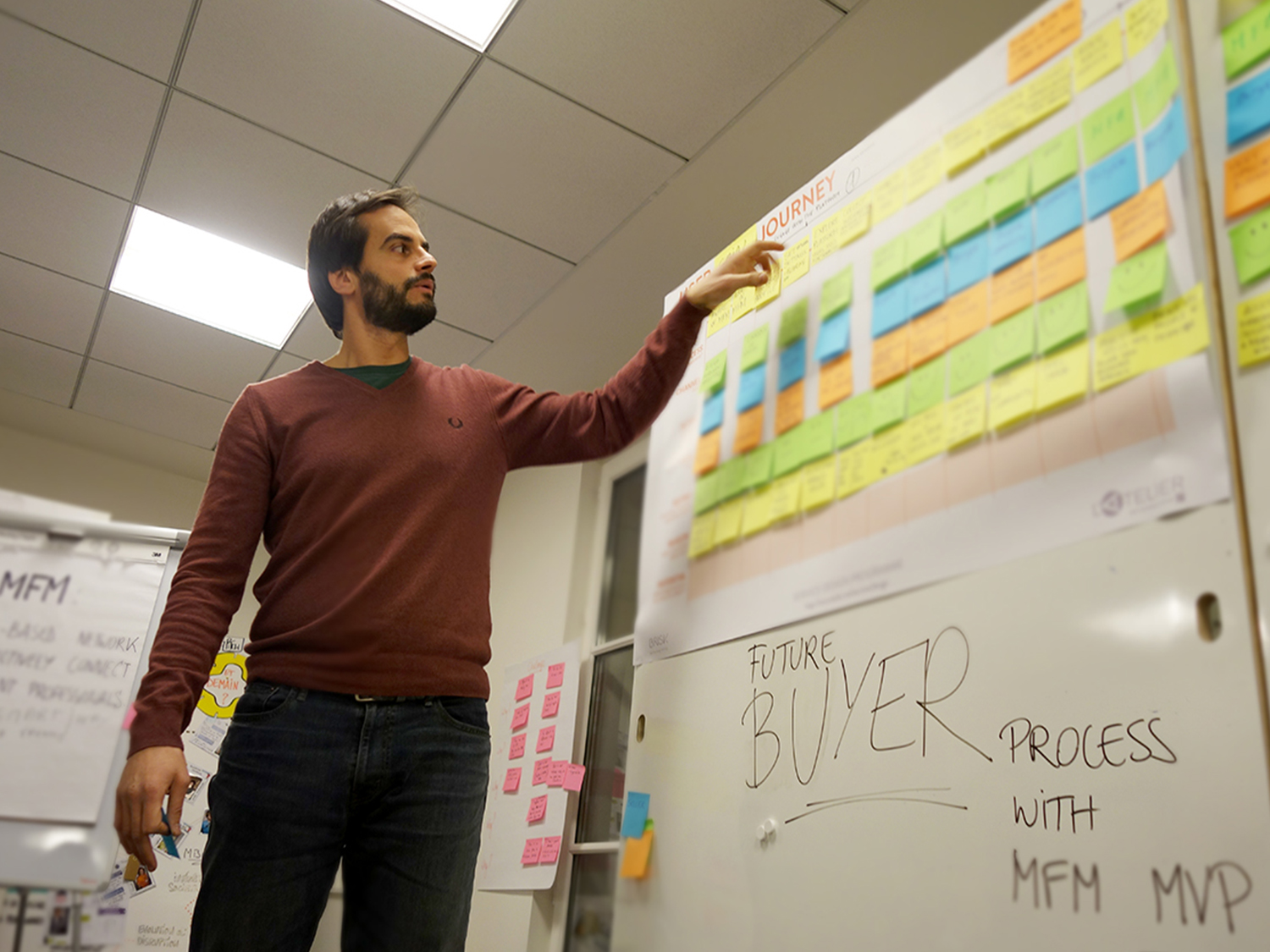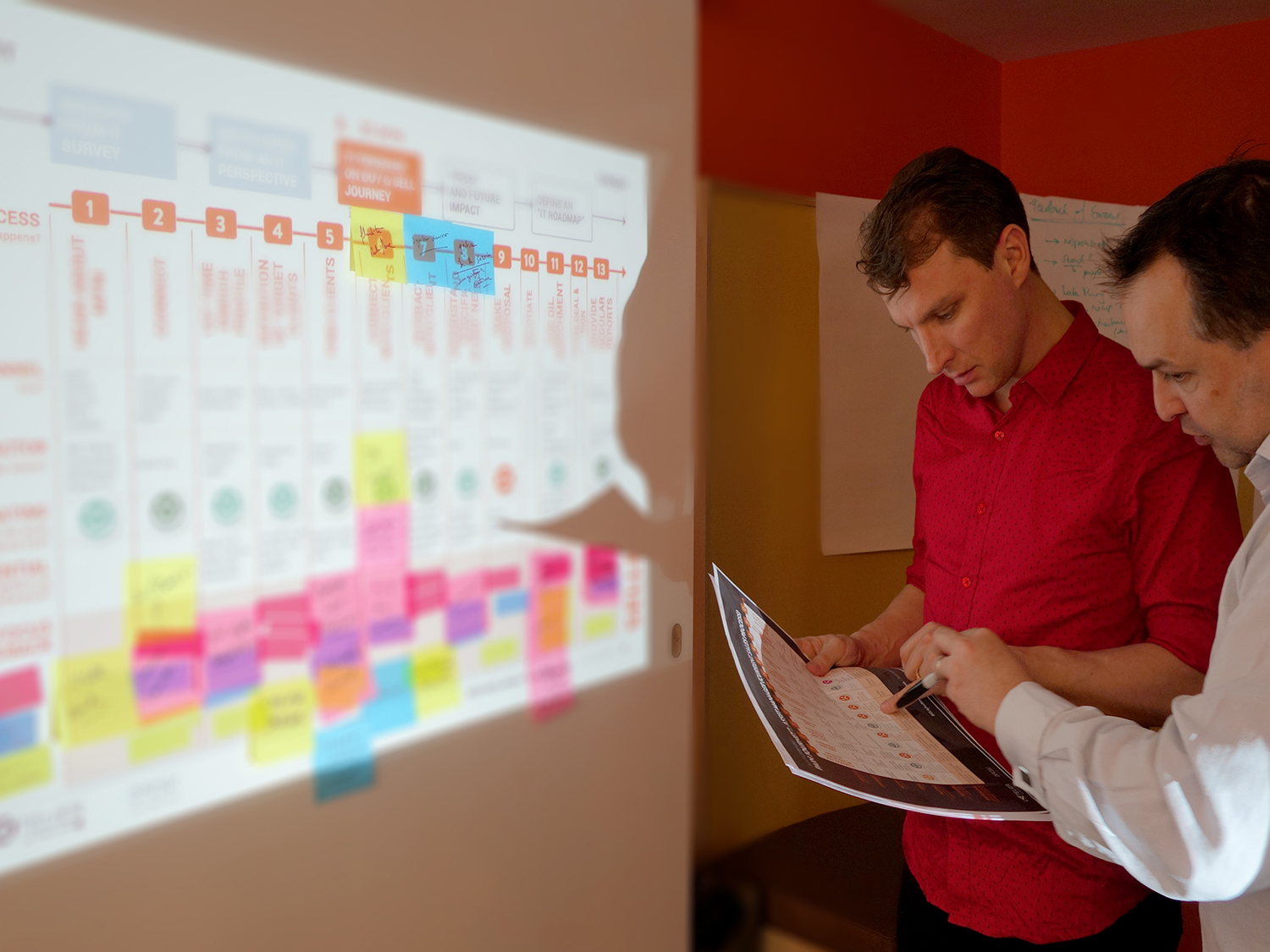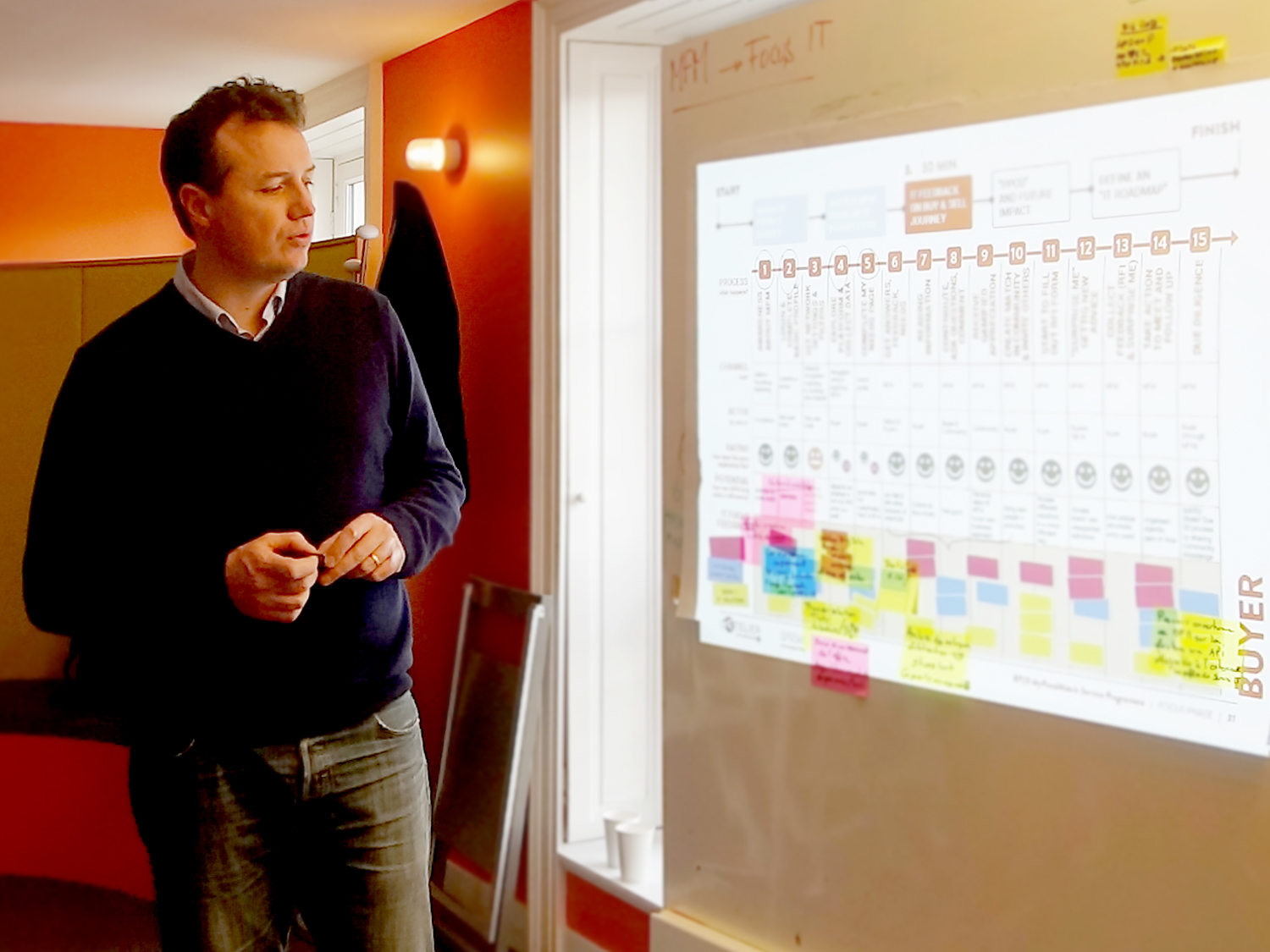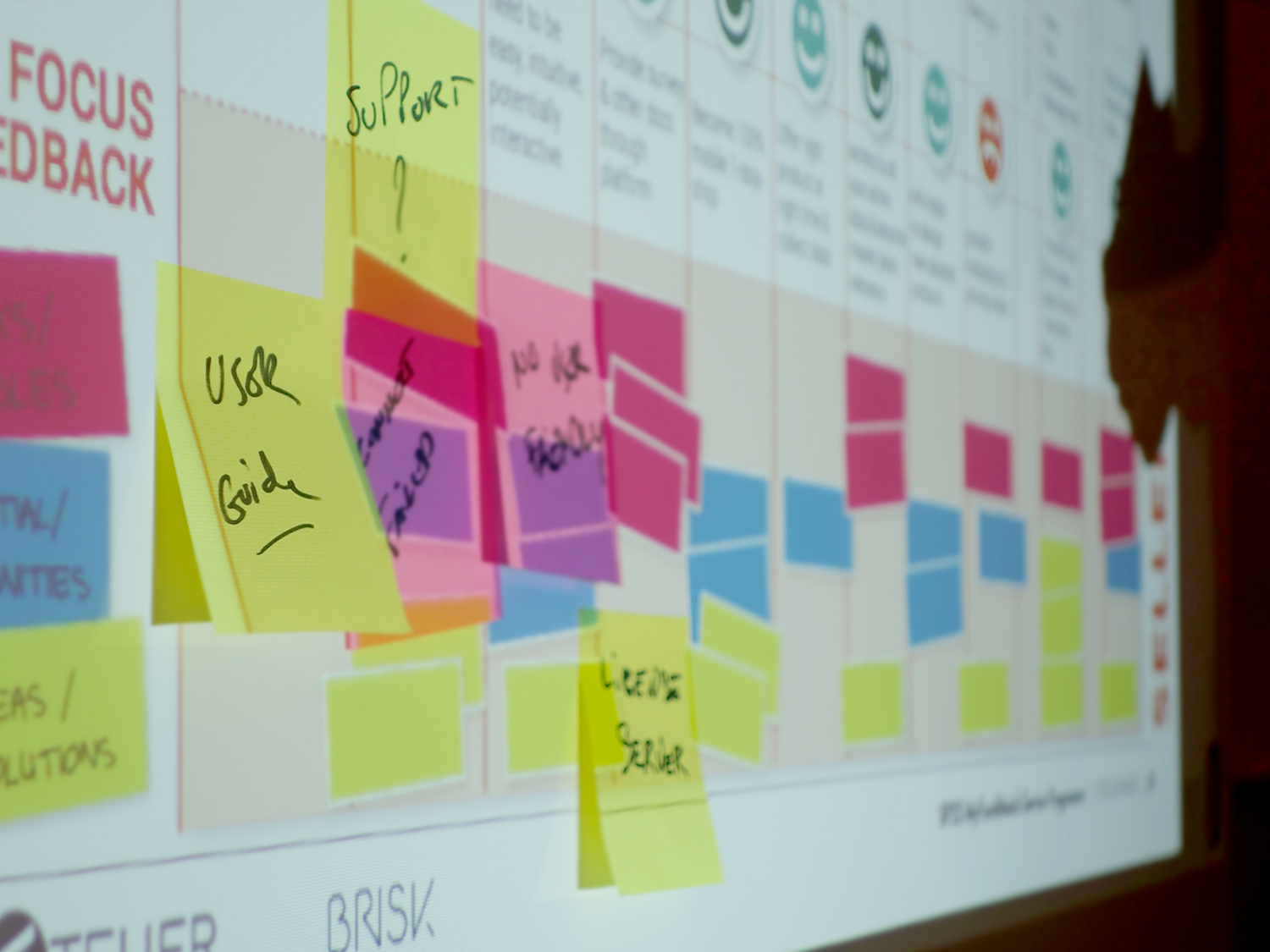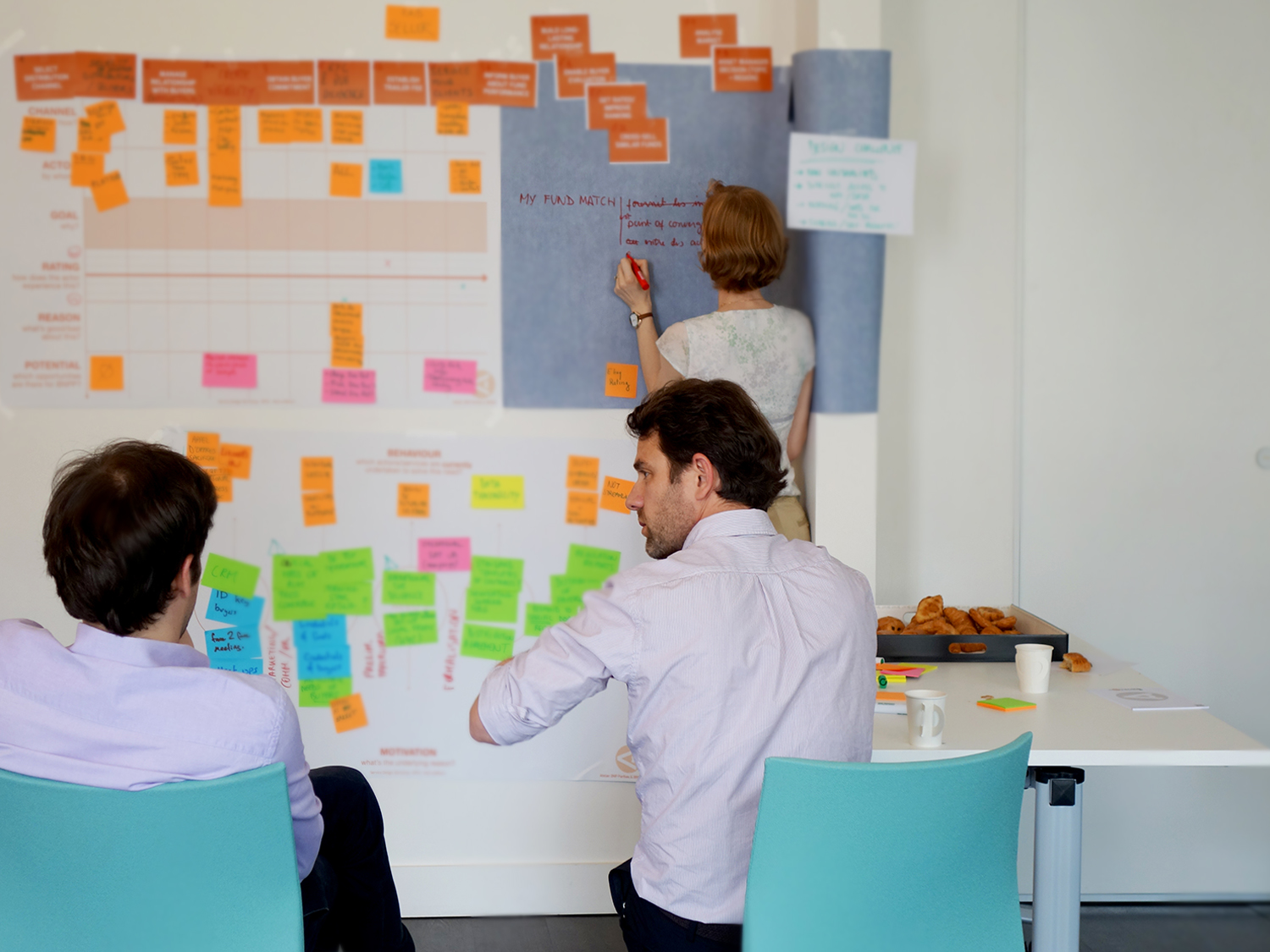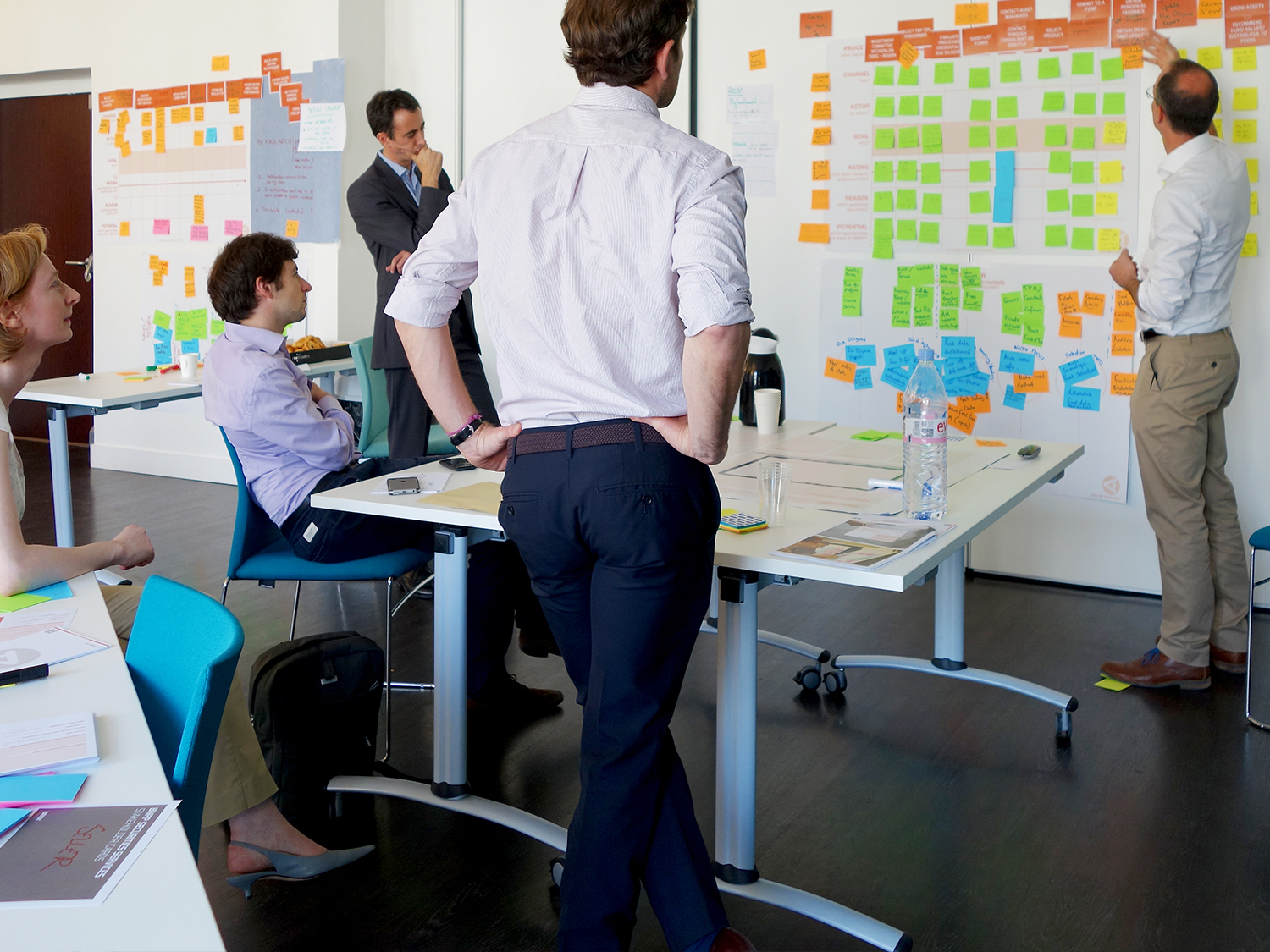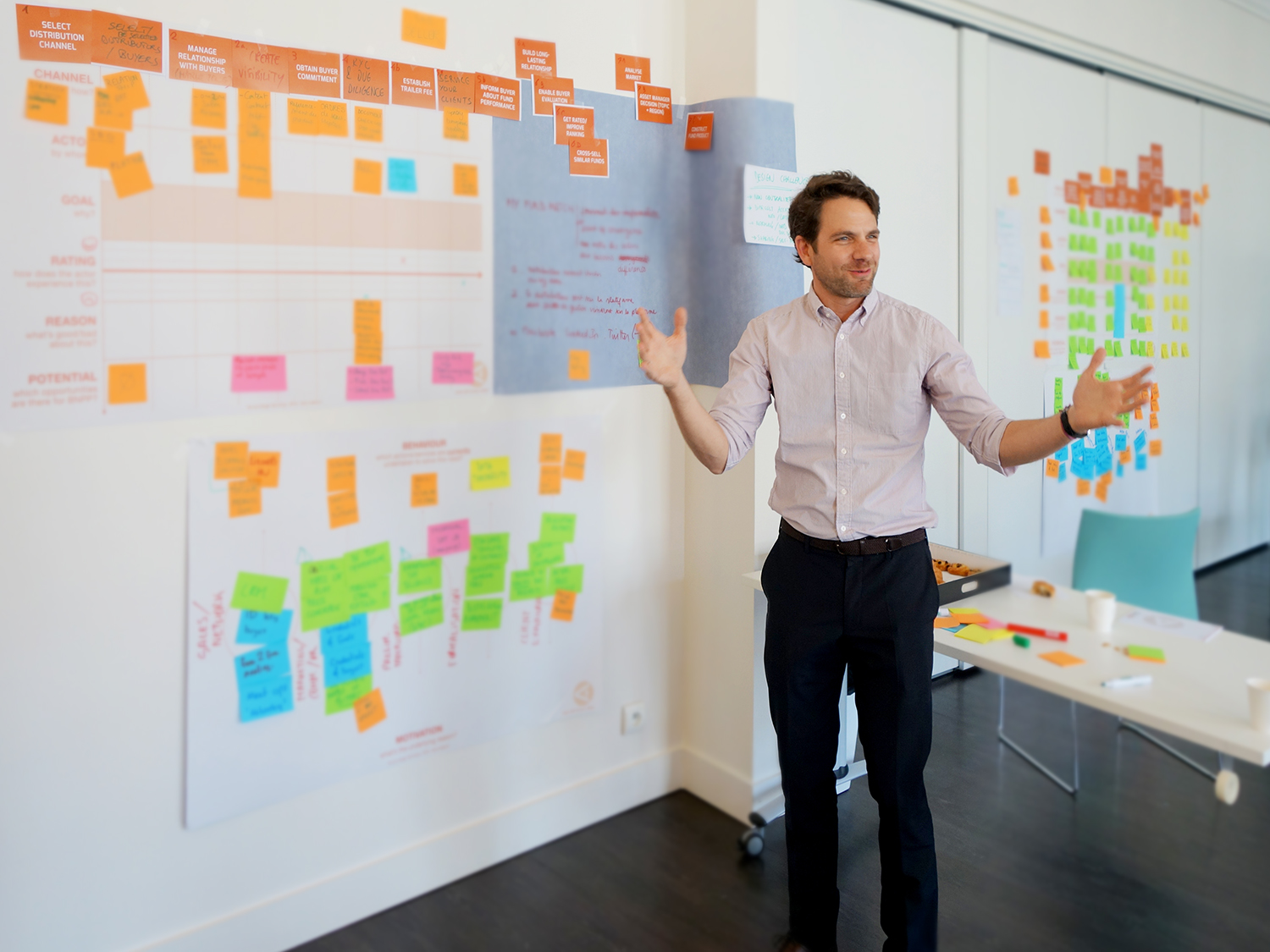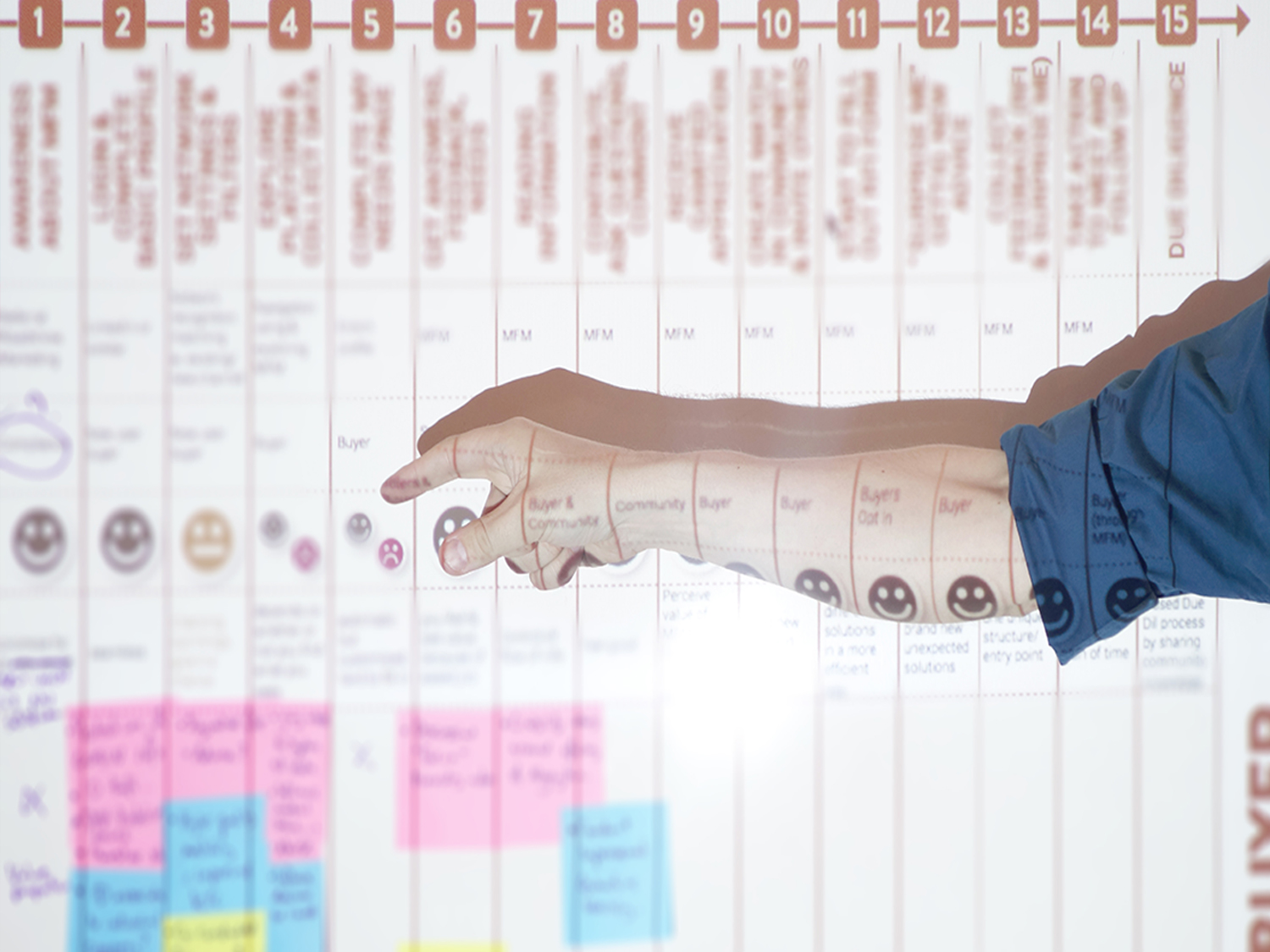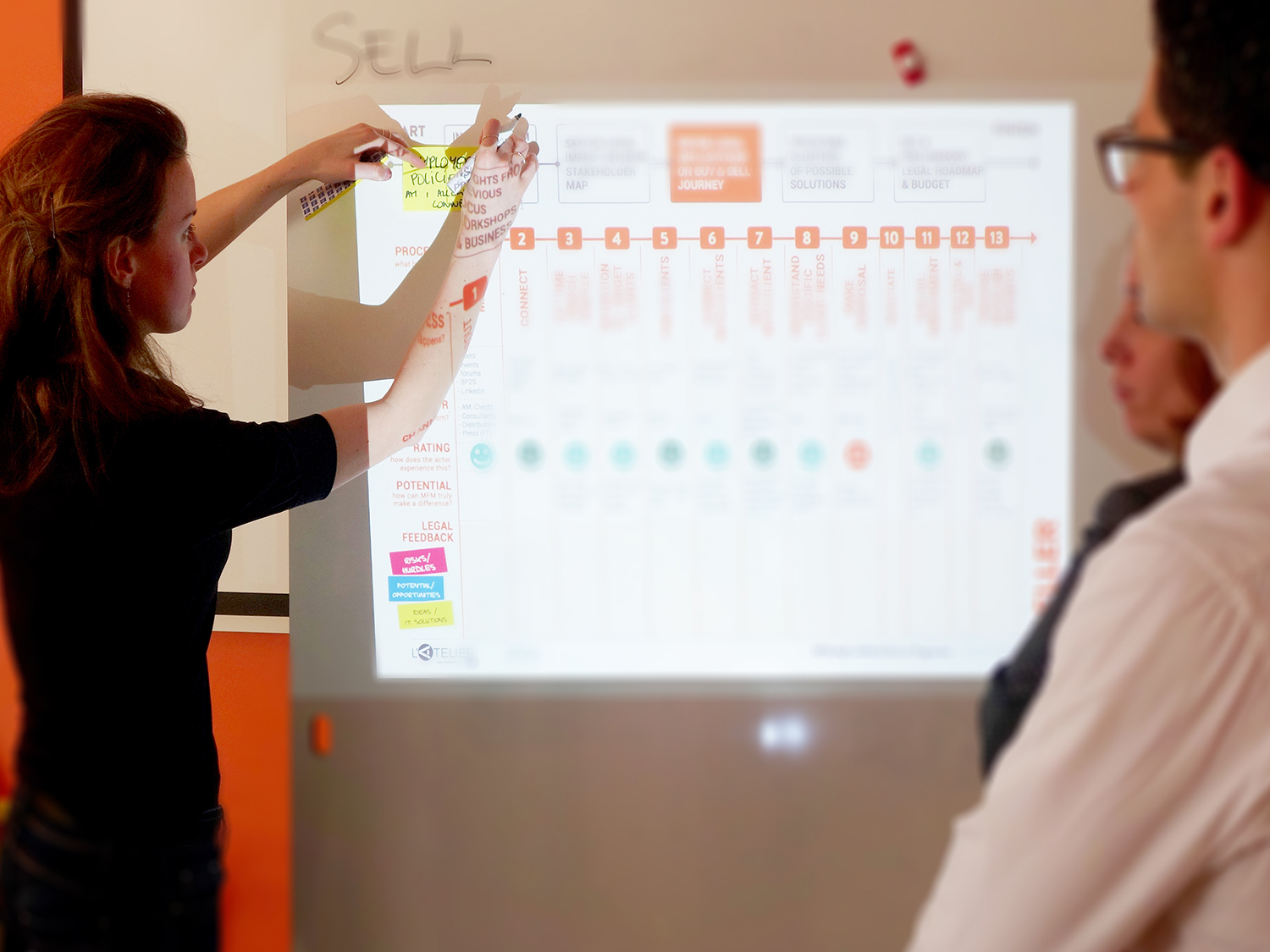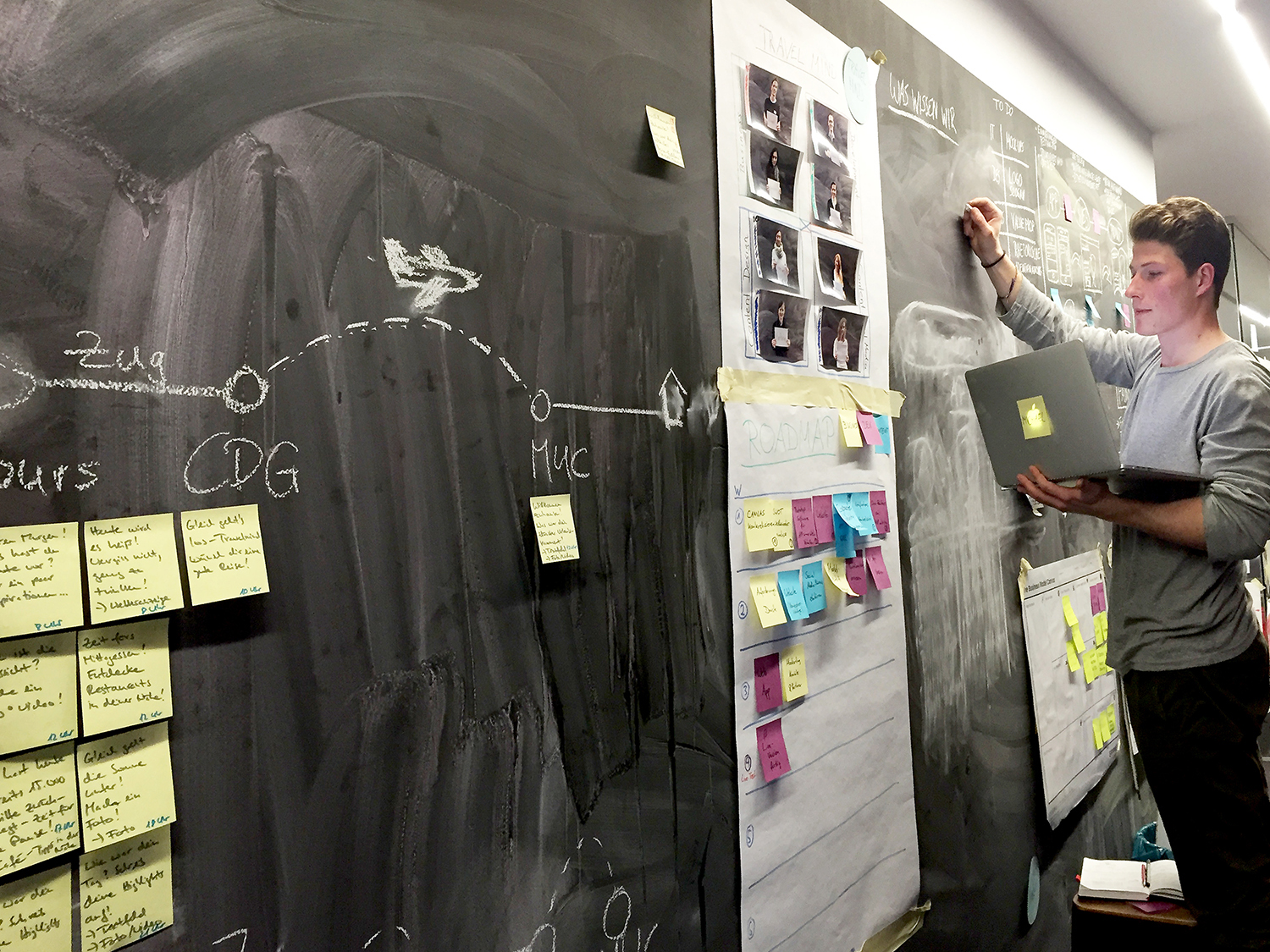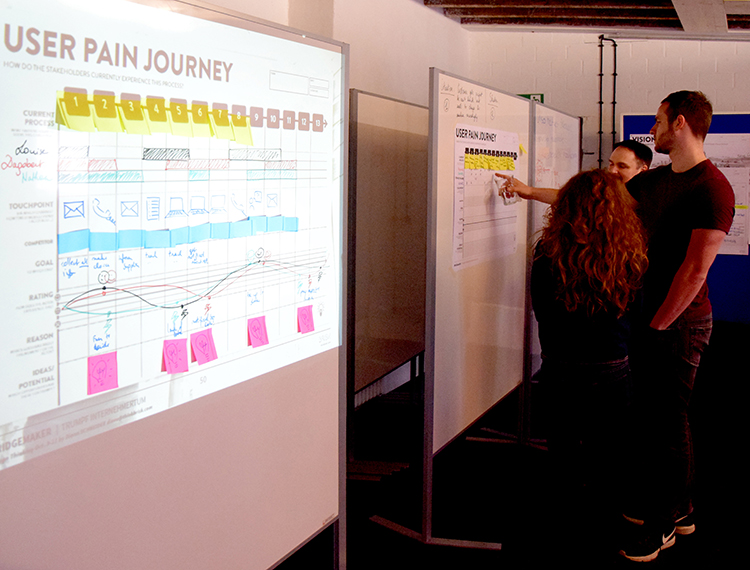#MONDAYMETHOD: Customer Journey Map
When discussing Service Design the term “Customer Journey” will come up sooner rather than later: still an insider tool a few years back, it has quickly become the go-to method for corporate strategists, innovation leads, entrepreneurs to take stock of a flow, system or process. While we’re the first to applaud this newly acquired notoriety of one of our favourite Design methods, we’ve seen our fair share of Customer Journeys missing their full potential in an R&D process or confused with other methods like Service Blueprints or UX flows. That’s why we’ll kick off our #MondayMethod series unraveling this classic!
Customer Journey
END-TO-END MAPPING OF STAKEHOLDER NEEDS TO DEFINE THE IDEAL CUSTOMER EXPERIENCE ACROSS ALL SERVICE TOUCHPOINTS
chronological inventory of all the steps one/multiple stakeholders (“customers”) experience throughout different phases of a service, how they are assessed and what could be improved
map current processes, identify interactions, evaluate painpoints/ moments of truth and set goals for the ideal customer journey
3-4 hrs
(then repeated, refined, measured, fed new user insights, iterated at regular intervals)
Customer Journeys are an effective way to gain and visualise a systematic, contextual, empathetic understanding of how users experience complex processes or systems, across channels. They can be mapped by gathering all stakeholders (end users/service providers, different departments involved in the project, back-end/client-facing roles, patient/doctor/pharmacist, etc.) to collectively define how the Service is currently structured (ie: Status Quo Journey).
Each phase (pre-, during, post-) is split into service moments, which are inventoried (who does what, how, where, via which touchpoints, why?) and critically evaluated from each “customer” (user/stakeholder) perspective. A happiness curve along the journey indicates high/low points in the current service experience for each stakeholder, highlighting the gaps between expectation and reality by focusing on user needs/motivations. This is particularly insightful when deciding which painpoints to solve first when developing new solutions (quick wins/fire extinguishers) and which moments might only need a slight tweaking or positive reinforcement of the current, smoothly running process. It is critical to identify moments of truth: the individual phases/moments that are most important to each user segment in their evaluation of the service. If the moment of truth for your key customer segment is phase 4 out of 10, it doesn’t matter if your service over-delivers on all 9 other phases with customised, efficient, wildly over-engineered solutions: if phase 4 doesn’t address the specific needs from that customer’s perspective, it may be time to re-allocate your efforts/budget towards exceeding expectations in that particular moment, before tackling any other moment in the Journey.
HURDLES & RISKS:
BENEFITS:
WHEN THE RUBBER HITS THE ROAD:
We’ve used Customer Journeys to map legal/compliance/regulatory issues in newly developed fintech startups, identify logistic bottlenecks in retail delivery systems, pinpoint where a patient/doctor/pharmacist information handover can go wrong or define the ideal door-to-door travel experience. Click through our Case Selection below to see Customer Journeys in action:
THE MAKING OF:
While we’re not sharing the output and specific content of Customer Journeys for our client work, here’s a sneak preview of the earliest stages of building them: cocreative Service Design workshops for startups, corporates and academia where the very first drafts are built – and later digitised, visualised, refined, measured, iterated, and evaluated in close collaboration between our designers and the client:
OH, THE POSSIBILITIES:
In addition to the Status Quo Journey, an Ideal Journey can be built to define what the newly developed product/service solution will solve, how, for whom, in which concrete steps. This Ideal Journey can be fed with the metrics for each phase to show how well quarterly goals are being reached. Additional swimlanes can be added as seen fit: a Customer Journey (or any well-applied Design Method for that matter) should be a flexible, living tool that is (self-)critical, constanty fed new input/field insights throughout the project, driven by empathy for the specific emotional/rational perception of each individual moment from each user segment/stakeholder and help informed decision-making. The versatility of this tool allows it to be effective across sectors, project scopes and R&D settings. What are you currently solving that could be evaluated with a visual mapping of an end-to-end process from different stakeholders’ perspectives?
WHAT ABOUT YOUR CUSTOMER JOURNEY?
How do different stakeholders experience your processes, what happens when, how, why and which touchpoints should you improve? Let’s have a chat about your project to figure out whether this method could address your current business challenge and advise you on how best to implement it!


